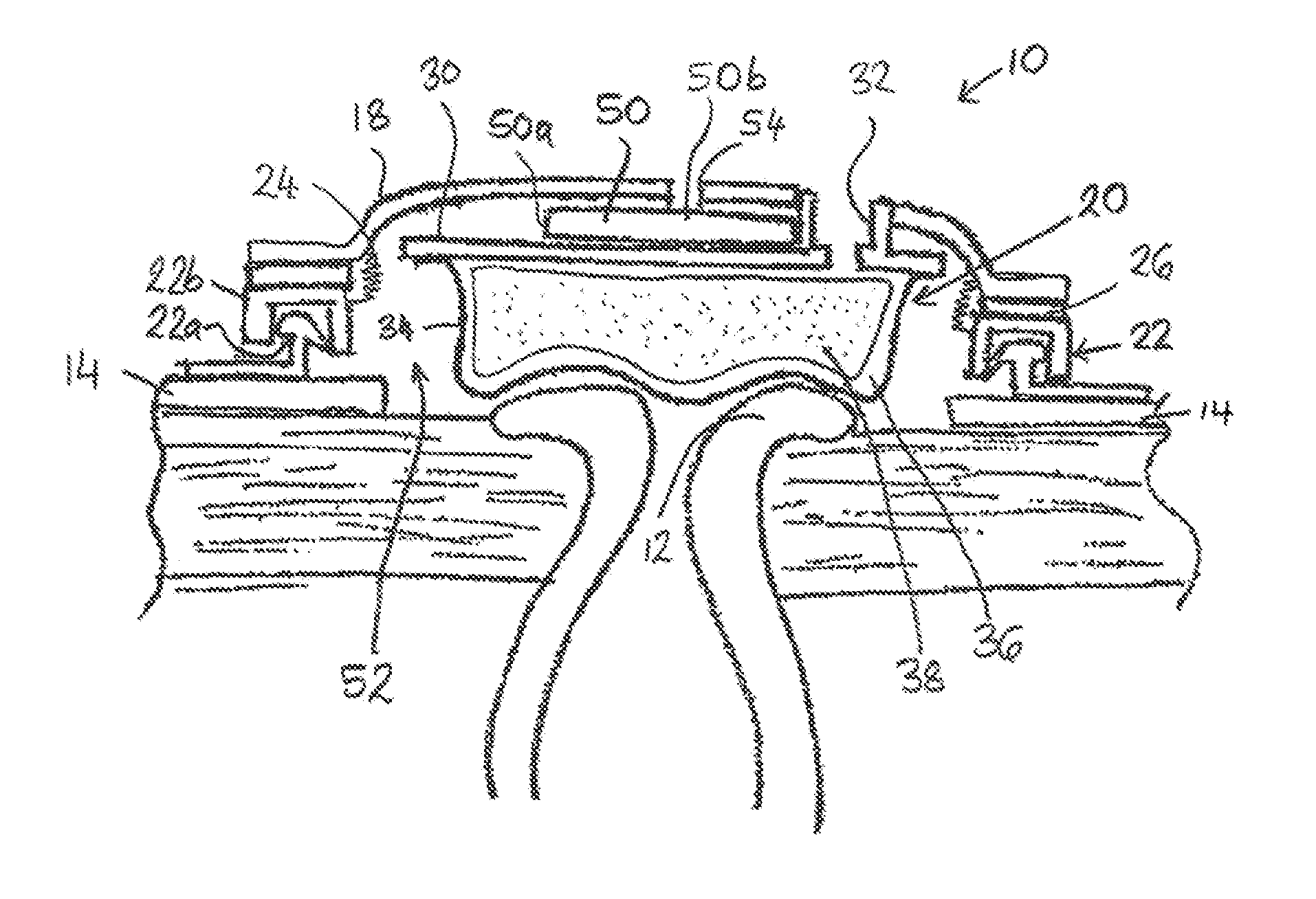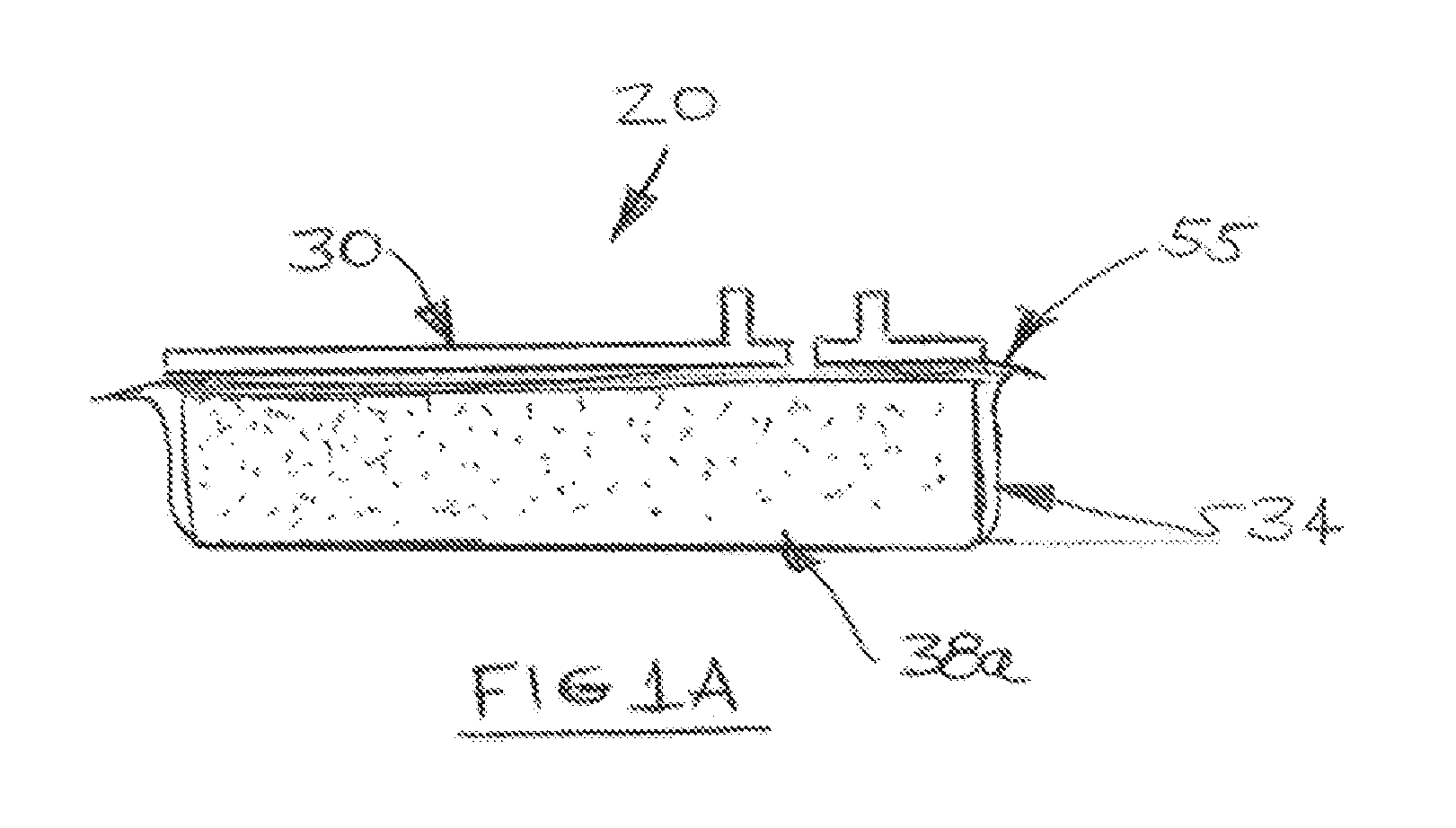Fluid filled seal for contacting the human body
a technology of fluid filling and human body, which is applied in the field of controlled evacuation of ostomy appliances having fluid filling seals, can solve the problems of direct affecting inflation pressure, difficult to keep contact pressure, and risk of accidental leakage of stool past the seal
- Summary
- Abstract
- Description
- Claims
- Application Information
AI Technical Summary
Benefits of technology
Problems solved by technology
Method used
Image
Examples
third embodiment
[0063]FIG. 11 illustrates a flow-restrictor for the port 32, in the form of a porous membrane 88, for example, a microporous membrane. The porous membrane 88 is adhered to the surface of the support wall 30 around the port 32, in order to control the flow rate of fluid through the port 32. A flow restrictor may be used in combination with a valve, or the port 32 may be unvalved and left open except for the flow-restrictor. For example, in the embodiment of FIG. 5, the exhaust valve 60b may be replaced by the flow-restrictor. This would provide a permanently open port 32b, but having a substantially restricted flow rate. Fluid may still be admitted rapidly into the chamber 36 by means of the inlet valve 60a, but gas discharged from the chamber 36 has to pass through the flow restrictor, thereby providing the damped response as described for the third embodiment, but without the need for the exhaust valve 60b.
[0064]Alternatively, the fluid control device 60 in FIG. 5 may be fitted wi...
fourth embodiment
[0068]In the preceding embodiments, the fluid filled seal 20 comprises a single chamber 36 that communicates via the port(s) 32 with external atmosphere. The inflation fluid used in the preceding embodiments is air. FIGS. 16-18 illustrate a fourth embodiment comprising a second chamber 102 that acts as a reservoir for the fluid, the second chamber 102 communicating with the first chamber 36 via at least one port 32.
[0069]The first and second chambers 36, 102 form, at least in use, a closed system. The fluid contained by the first and second chambers 36, 102 may be air or another gas, or it may be a liquid, such as saline, or a flowable gel. The second chamber 102 has different properties from the first chamber 36, such as a different elasticity. Fluid may be transferable freely from one chamber to the other to compensate for expansion and contraction of the first chamber 36. This would create a responsive system that reacts to forces applied to the flexible membrane 34 by transferri...
PUM
 Login to View More
Login to View More Abstract
Description
Claims
Application Information
 Login to View More
Login to View More - R&D
- Intellectual Property
- Life Sciences
- Materials
- Tech Scout
- Unparalleled Data Quality
- Higher Quality Content
- 60% Fewer Hallucinations
Browse by: Latest US Patents, China's latest patents, Technical Efficacy Thesaurus, Application Domain, Technology Topic, Popular Technical Reports.
© 2025 PatSnap. All rights reserved.Legal|Privacy policy|Modern Slavery Act Transparency Statement|Sitemap|About US| Contact US: help@patsnap.com



